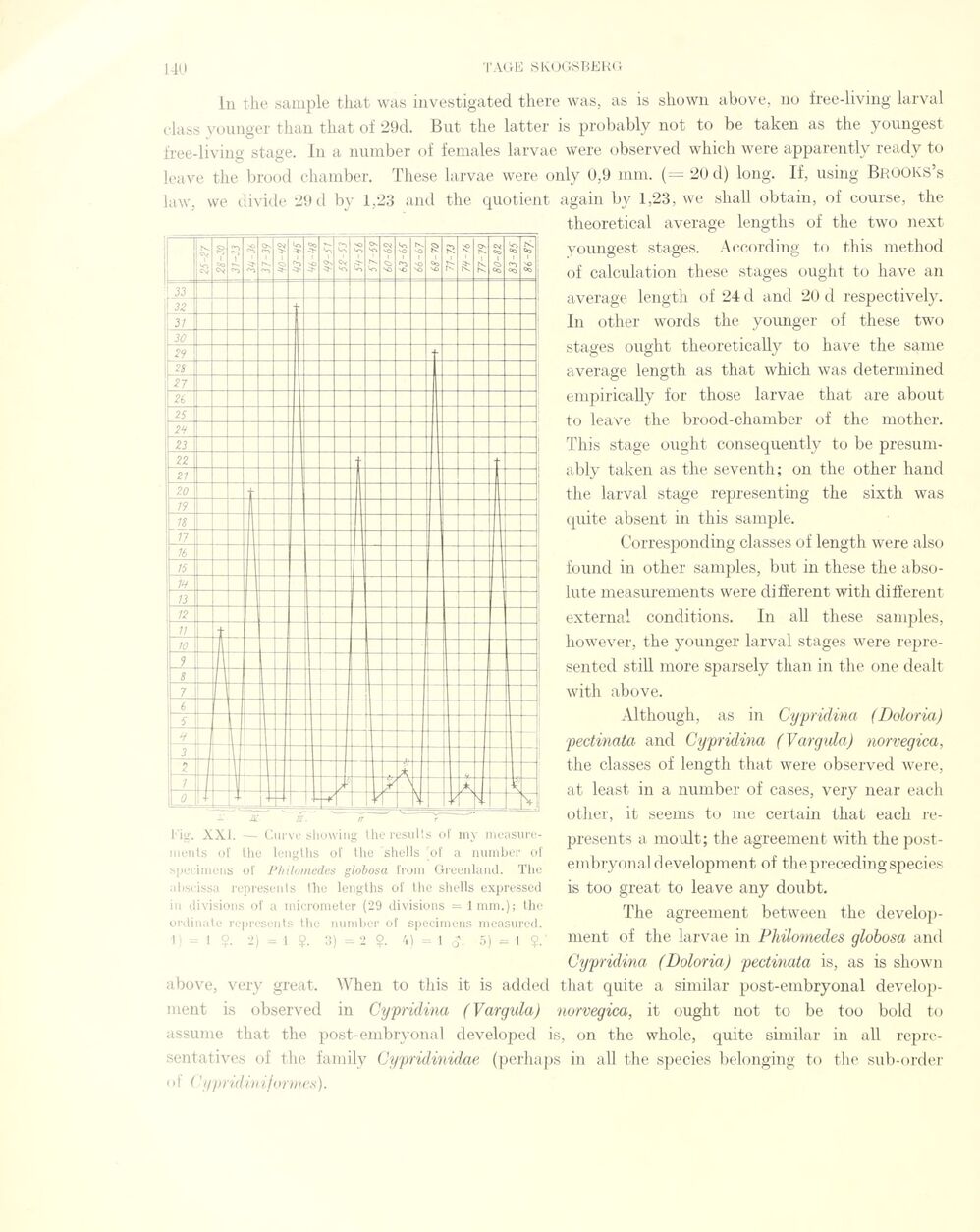
Full resolution (JPEG) - On this page / på denna sida - Sidor ...

<< prev. page << föreg. sida << >> nästa sida >> next page >>
Below is the raw OCR text
from the above scanned image.
Do you see an error? Proofread the page now!
Här nedan syns maskintolkade texten från faksimilbilden ovan.
Ser du något fel? Korrekturläs sidan nu!
This page has never been proofread. / Denna sida har aldrig korrekturlästs.
Lu the .sample that was iuvestigated there was, as is shown above, no free-living larval
dass younger than that of 29d. But the latter is probably not to be taken as the youngest
free-living stage, lu a number of females larvae were observed which were apparently ready to
leave the brood chamber. These larvae were only 0,9 mm. ( — 20 d) long. If, using Brooks’s
law, we divide 29 d by 1,23 and the quotient
Fig. XXI. — Curve showiug the results ot my
measure-luerits of the lengths of the shells of a number of
spedmens of Philomedes globosa from Greenland. The
ubseissa represents the lengths of the shells expressed
in divisions of a micrometer (29 divisions = lmm.); the
ordinate represents the number of specimens measured.
1) = 1 $. 2) = 1 ?. 3) = 2 $. 4) = 1 0T 5) - I $.
above, very great. When to this it is added
meut is observed in Cypridina (Vargula)
assume that the post-embryonal developed
sentatives of the family Cypridinidae (perhaj
agam by 1,23, we shail obtam, ol course,
theoretical average lengths of the two next
youngest stages. According to this method
of calculation these stages ought to have an
average length of 24 d and 20 d respectively.
In other words the younger of these two
stages ought theoretically to have the same
average length as that which was determined
empirically for those larvae that are about
to leave the brood-chamber of the mother.
This stage ought consequently to be
presum-ably taken as the seventh; on the other hånd
the larval stage representing the sixth was
quite absent in this sample.
Corresponding classes of length were also
found in other samples, but in these the
absolute measurements were different with different
external conditions. In all these samples,
however, the younger larval stages were
represented still more sparsely than in the one dealt
with above.
Although, as in Cypridina (Doloria)
pectinata and Cypridina (Vargula) norvegica,
the classes of length that were observed were,
at least in a number of cases, very near eacli
other, it seems to me certain that each
represents a moult; the agreement with the
postembryonal development of the preeeding species
is too great to leave any doubt.
The agreement between the
development of the larvae in Philomedes globosa and
Cypridina (Doloria) pectinata is, as is shown
that quite a similar post-embryonal
develop-norvegica, it ought not to be too bold to
is, on the whole, quite similar in all
repre->s in all the species belonging to the sub-order
of ( ’ypridiniformes).
<< prev. page << föreg. sida << >> nästa sida >> next page >>